Holiday Happiness
(Part 4)
To be read ideally in mid-December
Well, we’re down to the holiday “home-stretch”.
Have you eased the stress of the season at all by using some of the powerful strategies in the first few installments of this Holiday Happiness series? If not, first go back and read all previous parts of the series by clicking here to start with Part One. These should provide some effective tools to ease the tension many people feel during this time of year.
If you’ve done that, it’s now time to continue to manage your perspective and get more serious about our attitude, to really make the holidays happier and more joyful, regardless of how stressful they may be for you. And really, what we’re about to experience goes for life in general, not just the holidays.
Create “Moments” (and Memories)
Do you have some great memories (and neuroassociations) about the holidays? Maybe every year at this time, for example, you remember the smell of pumpkin pie baking at your grandparent’s house or the feel of a warm fire at your home as a child. Maybe it’s the memory of singing Christmas carols or going to the synagogue with your family. Many people love the holiday season partly because they have great memories of this time of year – some from early childhood (review the concept of neuroassociations to get a better understanding of how this works). Many people who don't like the holidays, on the other hand, have some negative memories and neuroassociations - sometimes without even remembering why.
So, to produce more joy and fulfillment during the holiday season, it's important to create some special “moments” and memories that can have an effect year after year, as well as build the positive memories and neuroassociations for your family as well. It will be a strong influence on your children’s happiness during the holidays when they’re all grown up with families of their own (more in this in a minute). And make sure to record these moments with pictures, and look at them every year as a regular reminder.
“We Don’t Have it so Bad”
The next tool to use when you’re feeling down or stressed during the holidays is what I call the “we don’t have it so bad” strategy.
This tool may be seem a bit painful at first – but it’s painful in a good way - because it’s very effective at generating feelings of gratitude in almost anyone.
What this strategy involves is taking a close look at the reality of how many people are much less fortunate than you and I. Even if you live alone in a 500 square foot apartment, drive an old car, don’t have much of a social life, or don’t even have family to enjoy the holidays with, there are many, many people much worse off. Many of these people are truly in very bad situations, with some rising above their misfortune to become role models for us all.
|
Like the relatively well-known story of W. Mitchell (pictured here) who was burned severely over most of his body in a motorcycle crash several years ago – and then a plane crash after that (yes, he lived through both accidents). He has to live in a wheelchair for the rest of his life, is in constant pain, and has a very disfigured appearance, including no fingers (they were burned off in the crashes). |
|
When I think of how difficult his life must be, I feel a huge sense of gratitude and appreciation for what I have, and for how relatively “easy” I really have it – even though life can get tough at times. I almost even feel somewhat ashamed that I let anything so "trivial" bother me. Because of this one strategy – which I have used for years (not just during the holidays, but in life in general) I am rarely stressed or sad during the holiday season.
Or what about the story of my friend, Bo Smith? Bo was one of my medical school classmates who had a loving wife and four young children. Suddenly, a few years ago he was diagnosed with pancreatic cancer and was dead within 6 months – leaving his wife without a husband and their four young children fatherless.
It makes you think, doesn’t it? Suddenly, the hectic malls, the numerous parties, the over-eating and even the perceived “loneliness” some people experience are relatively small in comparison. It’s almost embarrassing to think these things get to us.
 |
|
These are examples of people who, by most accounts, have it much worse than most of us.
I’ll be providing other stories of dealing with adversity for you to read on an ongoing basis if you need more inspiration. Just check regularly in the “Handling Adversity” section of this website for more. Read as many as necessary to provide that sense of gratitude for your own life – during the holidays and at any time of the year.
Unless you have a story like one of these people, you should really feel better after considering their lives – and how good we really have it. You might even find yourself waking up everyday thankful for what you have – and for what you don’t have to endure just to get through a typical day (like W. Wilson).
This strategy is somewhat of a “serious” happiness and gratitude tool, but if you consider how good most of us have it relative to many others – even with our problems, difficulties, and painful situations – perhaps you can start to build a true sense of appreciation for life and, therefore, enjoy the holidays much more – even with all it’s “pressure” and frustrations.
Establish a Holiday Family “Tradition”
The next strategy for this week is much easier and much more fun (and somewhat related to the previous discussion about creating memories and "moments"). And that is to establish a holiday family tradition. I learned this one from my friend Annie in Newport Beach. She told me about one family where the father reads T’was the Night Before Christmas to the whole family on Christmas Eve every year.
That’s pretty simple, right? Simple, but effective. Because apparently that tradition has been passed on from generation to generation – and it’s something the whole family looks forward to every year – and remembers fondly their entire life. It becomes another very positive neuroassociation that creates positive overall feelings for the holiday season. It’s important to create many of these positive moments and neuroassociations as possible. The more you create, the more you will enjoy the holidays as you go through life.
|
 |
Maybe you could make – or even create – a certain holiday treat that you give out to your friends and family every year. Make it something that becomes your tradition and your “trademark”. Make it something that makes people know you and remember you when the holidays come around.
|
 |
Think of something that would create a warm, memorable, passionate, contributing, appreciative feeling in you that becomes something you look forward to experiencing every year at this time. Create as many positive neuroassociations as possible.
If you do, you’ll soon start to love the holiday season – and really look forward to it. And, at the same time, you could be contributing to the happiness of others, which will make you feel even better.
Soon the holiday season will be winding down and we’ll be looking at starting a new year. So, to start the new year off right, the next edition of “Holiday Happiness” (Part 5) will address some preparation strategies for the year ahead (and even beyond).
So make sure to click here to read Part 5 of the series.
You’ll BeHappy! you did.
BeHappy! my friends
PLEASE CONSIDER...
If the information on this site helps you and you'd like to make a donation to BeHappy101.com (to help make others happy), please click on the button below to make a contribution. The amount you donate is entirely up to you. A portion will used to contribute to the happiness of others and is greatly appreciated. [WHY DONATE?] |

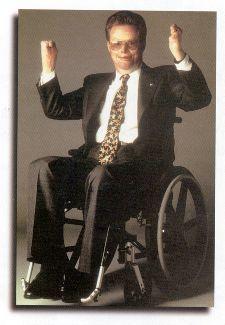
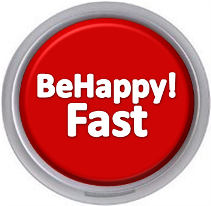

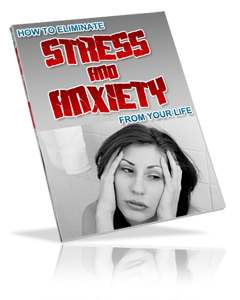
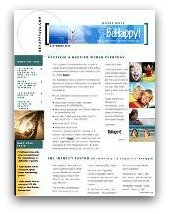
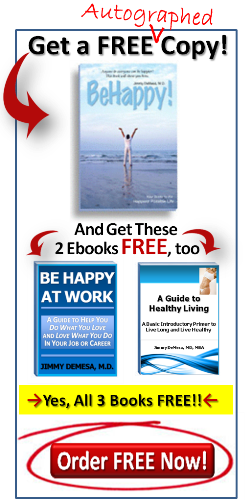
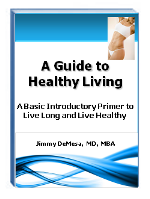
 I'm Jimmy, the founder and creator of this site and the whole BeHappy! system. My life's purpose is to be a positive, creative force for health and happiness and through this website, my books, coaching, and happiness-building programs, I intend to help as many people as possible live their happiest possible lives.
I'm Jimmy, the founder and creator of this site and the whole BeHappy! system. My life's purpose is to be a positive, creative force for health and happiness and through this website, my books, coaching, and happiness-building programs, I intend to help as many people as possible live their happiest possible lives.